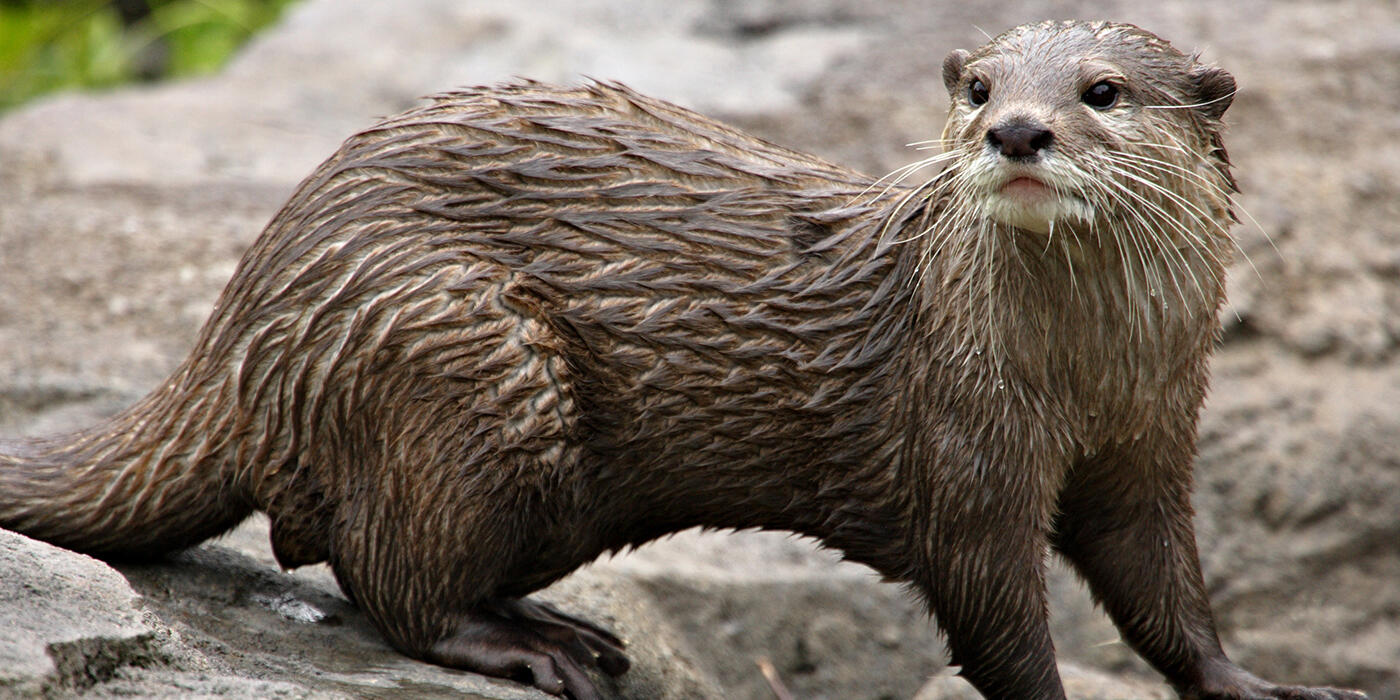Family Of Asian Small-Clawed Otters Arrives At Asia Trail

A family group of Asian small-clawed otters arrived at the Smithsonian's National Zoo this spring!
This species spends much of its day foraging for food, so it was only fitting that Whole Foods Market select gastronomic-themed names. They chose Chowder and Clementine for the Zoo's 5-year-old father and 3-year-old mother, respectively, as well as Pork Chop (male), Pickles (female), Saffron (female), Olive (female), Peaches (female), Turnip (male) and Radish (female). The last adolescent male answers to a more traditional title: Kevin. Whole Foods Market engaged its Facebook fans to select the most masterful moniker for the 11th otter, a female whom they named Rutabaga. Asian small-clawed otters are the smallest and most social otter species in the world. When these animals have pups, the entire family pitches in to raise the young. Zoo visitors can expect to see Chowder and Clementine teach their offspring—born in August 2010 and May 2011—to swim, play, forage for food and nest materials and catch fish.
The new family will ultimately help the Zoo learn more about their behaviors and social dynamics. Because all 11 otters are similar in size and coloring, Zoo staff and volunteers identify one otter from another by small shaved or dyed areas on different parts of their bodies.
Located on Asia Trail, the otter exhibit is one of the largest in the nation. It was specifically designed to house a large, multigenerational family and mimic all the elements of a riverbed habitat, including a waterfall, stream and climbing structures such as rock formations and logs. Asian small-clawed otters are built for navigating the water: the outer layer of their fur is waterproof while an inner layer keeps them insulated from the cold, their slightly flattened tails act like rudders, and their partially webbed feet help them steer.
Asian small-clawed otters are vulnerable to extinction in their native Indonesia, southern China, southern India, the Philippines and Southeast Asia. Scientists consider them an indicator species—their population indicates the general health of their habitat and the health of other species in their habitat. Threats such as habitat destruction, hunting and pollution put these small mammals and hundreds of other species at risk of going extinct.